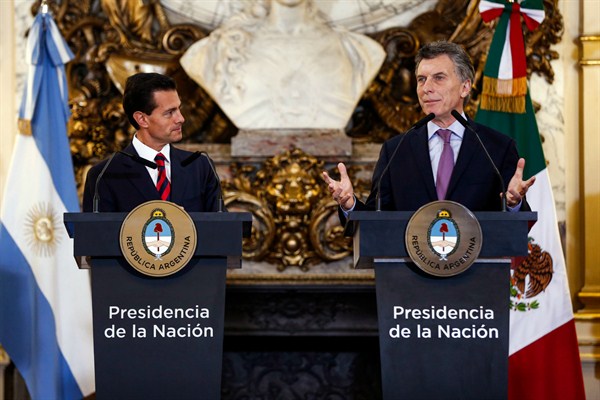In late July, Mexican President Enrique Pena Nieto visited Argentina, where he and Argentine President Mauricio Macri agreed to expand an existing trade agreement and seek a more comprehensive one moving forward. In an email interview, Sean Goforth, director of research for Nearshore Americas, discusses Mexico-Argentina political and economic relations.
WPR: What was the nature and extent of Mexico-Argentina political and economic ties under former Argentine President Cristina Fernandez de Kirchner, and how are bilateral ties likely to change under President Mauricio Macri?
Sean Goforth: At odds! Mexico’s foreign relations have been oriented around integration into the North American economy. This produced big benefits in the 1990s; it arguably proved a liability during the commodity boom from around 2005 to 2012; and now it is yielding further dividends as the U.S. economy outpaces other developed economies. By contrast, Argentina started out the Kirchner era by seeking greater integration with its South American neighbors through Mercosur, but that approach quickly turned into prioritizing the export of soybeans and other commodities to China. The country’s trade competitiveness languished under Cristina Fernandez’s presidency. Now Macri is trying to carve out a path of diversifying trade relations. Overtures to Mexico are a signal that Argentina is trying to regain lost competitiveness by opening up to the North American market. A further warming of political ties will likely precede any new trade deals. Both sides have to build confidence, even as they work to identify the potential impacts on domestic industries.

